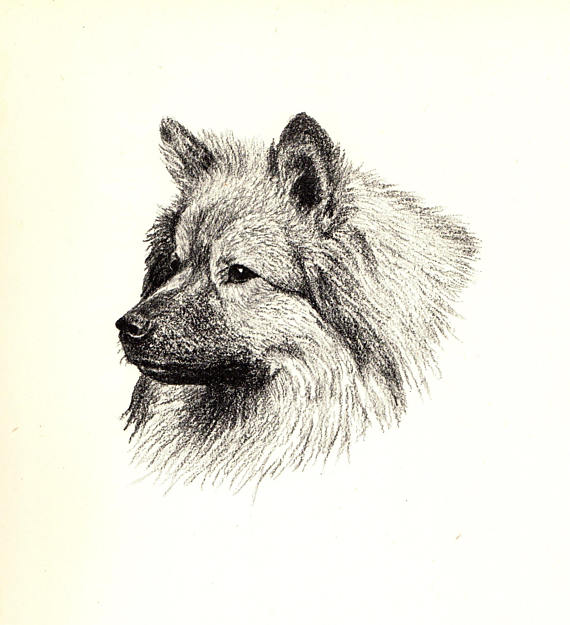
The exact origin of the Keeshond has not been recorded, but it’s believed to have descended from ancient strains of dogs that produced other Spitz breeds. Development of the breed is thought to have occurred in 17th century Holland, and paintings as well as the written word support this timeline, though at the time, the breed was known as the Wolfspitz in Germany, the Chien Loup in France, and the Lupini in Italy. It would be years before the Keeshond would be known by the name we call it today.
By the 18th Century, the Keeshond was relied upon as a watchdog and companion on small boats called Rijinakens that traveled on the Rhine River, and for that reason, it was also called the “barge dog.”
A significant time in 18th century Holland was a political uprising lead by Cornelis (Kees) de Gyselaer, a Keeshond fancier and the leader of the Dutch rebellion. The dog he owned came to be known as “Kees,” and he was depicted in so many political pamphlets, caricatures, and hand-outs that the dog – and breed – became a symbol of the Dutch patriot. And yes, the breed was later named the “Keeshond,” Kees for Gyzelaar and “hond” meaning dog in Dutch. De Gyzelaar didn’t mind. He felt that the breed embodied the strength of the Patriot party, and when the Keeshond became the party’s official mascot, he was probably pleased.
Unfortunately for the breed, the rebellion against the House of Orange failed. It caused many Keeshond owners to abandon, or worse, destroy their dogs out of fear that they would be identified as participants of the failed insurrection. To make things worse, river boats were getting larger, and the need for the Keeshond all but vanished. Were it not for the few farmers, peasants, and river men who kept their dogs, the breed may have disappeared altogether.
In the 1920s, Baroness van Hardenbroek took an interest in saving the breed, and to great success. Within 10 years, the Keeshond became so popular that the Dutch Keeshond Club was established. In 1930, the American Kennel Club recognized the breed, and today it is Holland’s national dog. Needless to say, we have skipped over many years of the breed’s history and present this only as a broad overview. For a more comprehensive treatment, visit here, or read up the breed’s history at the Keeshond Club of America’s website.
Image: 1935 Vintage Keeshond Dog original book plate by C. Francis Wardle is available here.
